[Editor’s note: This article runs in a new section of The Tyee called ‘What Works: The Business of a Healthy Bioregion,’ where you’ll find profiles of people creating the low-carbon, sustainable economy we need from Alaska to California. Find out more about this project and its funders.]
Natasha Anderson-Brass plunges a shovel into the ground and hauls up some of the last organic carrots from this season’s harvest.
She tills three patches of soil on Kirby Road in Courtenay on central Vancouver Island that total almost one-third of a hectare. If that’s not much in terms of industrial farming, it’s a life-altering windfall for Anderson-Brass.
She is a new farmer, just starting out in a region beset with high land values.
And she is Indigenous, which can pose additional hurdles.
“Many Indigenous people were forcibly removed from land during colonization,” she says. “Then they weren’t allowed to own farmland. We weren’t supported or encouraged to be on the land.”
In Canada, where five per cent of people self-identify as Indigenous, just 2.8 per cent of farmers are Indigenous, according to Statistics Canada.
In joining those ranks, two decisions by Anderson-Brass made a big difference. Living in Vancouver during COVID in 2021, she “took the leap” and applied for a two-year apprenticeship with Stewards of Irreplaceable Lands, based in Sooke, near Victoria.
Then came her second critical move. She selected organic Amara Farm for her apprenticeship, a decision that would provide her with not just a plot of land, but the support needed to make her farm viable.
Chalk up another local farming win for Amara’s owners, Arzeena Hamir and Neil Turner, who met while studying agriculture at the University of Guelph in Ontario. In 2012 they were living in Richmond with their two young daughters and decided to make a move — to land they’d bought in Courtenay.
Amara Farm has expanded over the years and now grows a total of 45 crops, some in-ground, others in four greenhouses. They produce everything from spinach and bok choy to garlic, blackcurrants, hazelnuts and blueberries pollinated with native bees from the farm’s forest rather than commercial hives. Seeds are sold, too, including through the BC Eco Seed Co-op.
“Having this much stuff, we get a lot of biodiversity, birds, insects,” Hamir says during a walking tour.
The search for the crop best adapted to the soil, climate and market demands is ongoing. It’s just one of many preoccupations for Hamir and everyone else connected to Amara, because what started as a farm has evolved into something more.
What’s been built and continues to expand is a food hub for the region — one that now includes crops grown by Natasha Anderson-Brass. She calls her operation Minwaadizi Farm — “to live a good life” in the Anishinaabemowin language of her people.
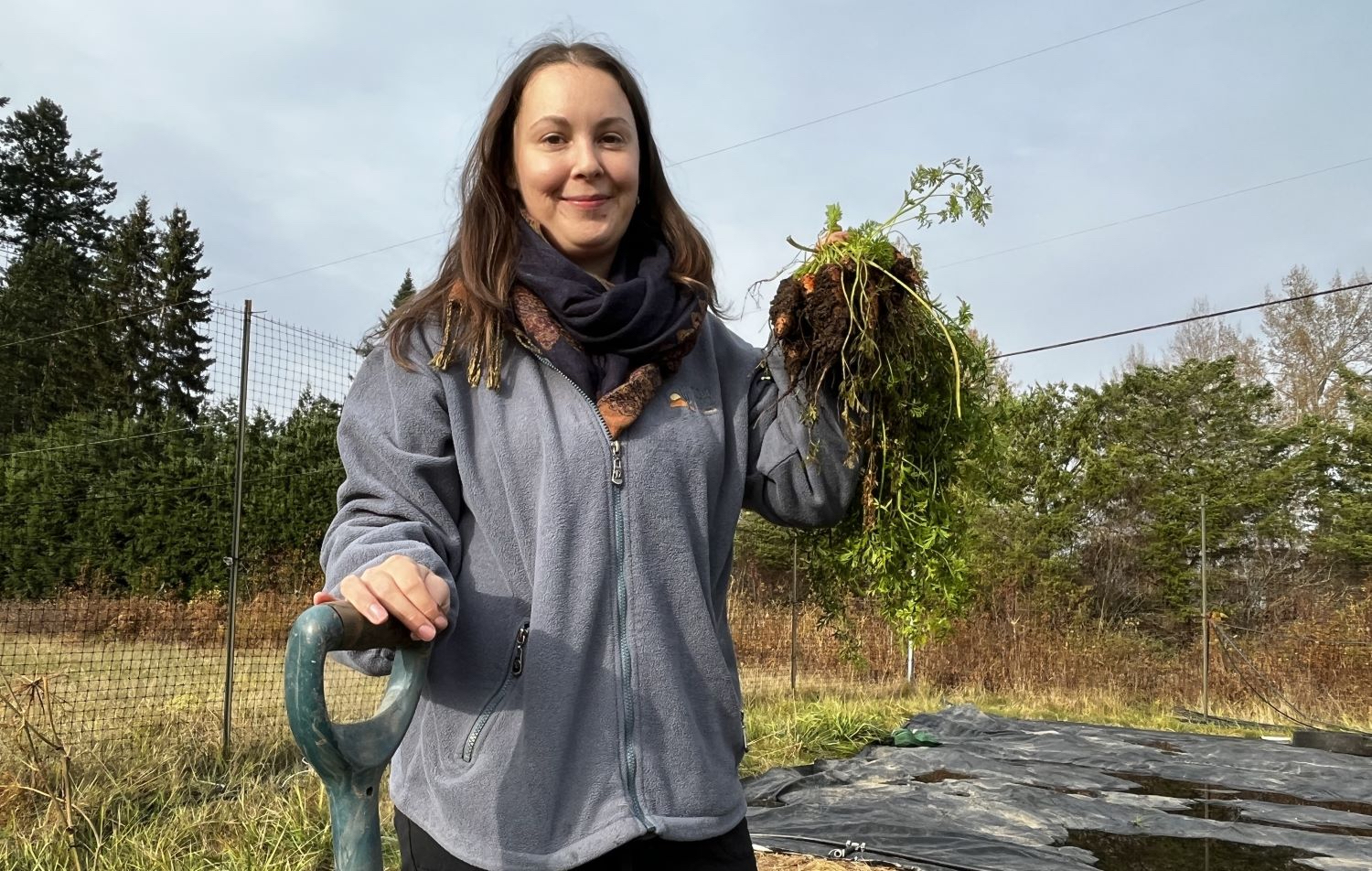
Connecting that hub to as many people as possible lies at the heart of Hamir’s vision. “The farming community sometimes limits itself, forming a circle that often doesn’t feel as inclusive as it should,” she says.
“I’d love to see farmers involved in things other than farming. When the wider community understands what farmers are going through and what farming is about, there’s a much better appreciation for how hard it is. Farmers are part of our community and need to be supported."
Earlier this year Amara and Minwaadizi farms joined forces to create the Comox Valley Organic Co-operative, and they are hoping to bring more active farmers on board in the coming months.
Customers pay up front, at the start of each season, to receive one box of seven or eight vegetables per week over 12 weeks in summer, eight weeks in fall. They even get recipes.
The cost is $35 per week. “The money’s in hand, a guaranteed sale, which is amazing for farmers,” Hamir says.
Subscribers drop from close to 70 in summer to 32 in fall owing to a limited supply of produce.
Amara’s limiting factor is water, despite best efforts to be self-sufficient. In 2016, the owners excavated a pond at the low end of the property to collect surface runoff for crop irrigation — adding to the groundwater in the area rather than helping to deplete it.
This past summer was so dry, it drained the entire half a million gallons in the pond, Hamir says.
“We ran out of water and had to sacrifice a few crops. Our squash and zucchini did not turn out well.” The plan is to double the pond’s capacity for 2024 at an additional cost of $10,000.
Given climate change, the couple are forced to rethink what they grow. “Lettuce, salad greens, celery take a lot of water,” Hamir says. “Other crops did grow really well, such as potatoes. The thing is, you can’t make a ton of money off them. These are some of the questions we’re asking ourselves.”
Currently, about 70 per cent of Amara’s products are sold through the co-op. That includes farmers markets, which have the downside of pitting one producer against another and attracting fewer customers during inclement weather.
The other 30 per cent is sold to local restaurants, Edible Island Whole Foods Market and Lush Valley Food Action Society.
Lush buys food from about 25 local farmers and shares it with the community, including students, seniors, First Nations and people living in social housing.
“We want to make it really easy for farmers to have a consistent market and for people struggling with barriers to access nutritional food,” says executive director Maurita Prato.
Lush had revenues of $1.24 million last year, including $761,291 in grants. The non-profit employs nine permanent staff and up to five seasonal staff. It offers a vast array of services, distributing food boxes, serving hot meals, supporting community gardens, hosting food workshops and catering events.
Lush volunteers this year also collected about 12,000 kilograms of tree fruit — apples, cherries, pears, plums, prunes, figs — food that might otherwise have gone to waste. Second-grade apples are pressed into juice for sale.
While Amara’s vision aligns with that of Lush, Hamir sees the day when her produce is fully sold through the co-op.
“As we get more growers coming on, we can expand that,” she says. “As the co-op grows, we would like to hire staff within the co-op to do the bookkeeping, much of the marketing, deliveries.
“There’s room to grow — pun intended.”
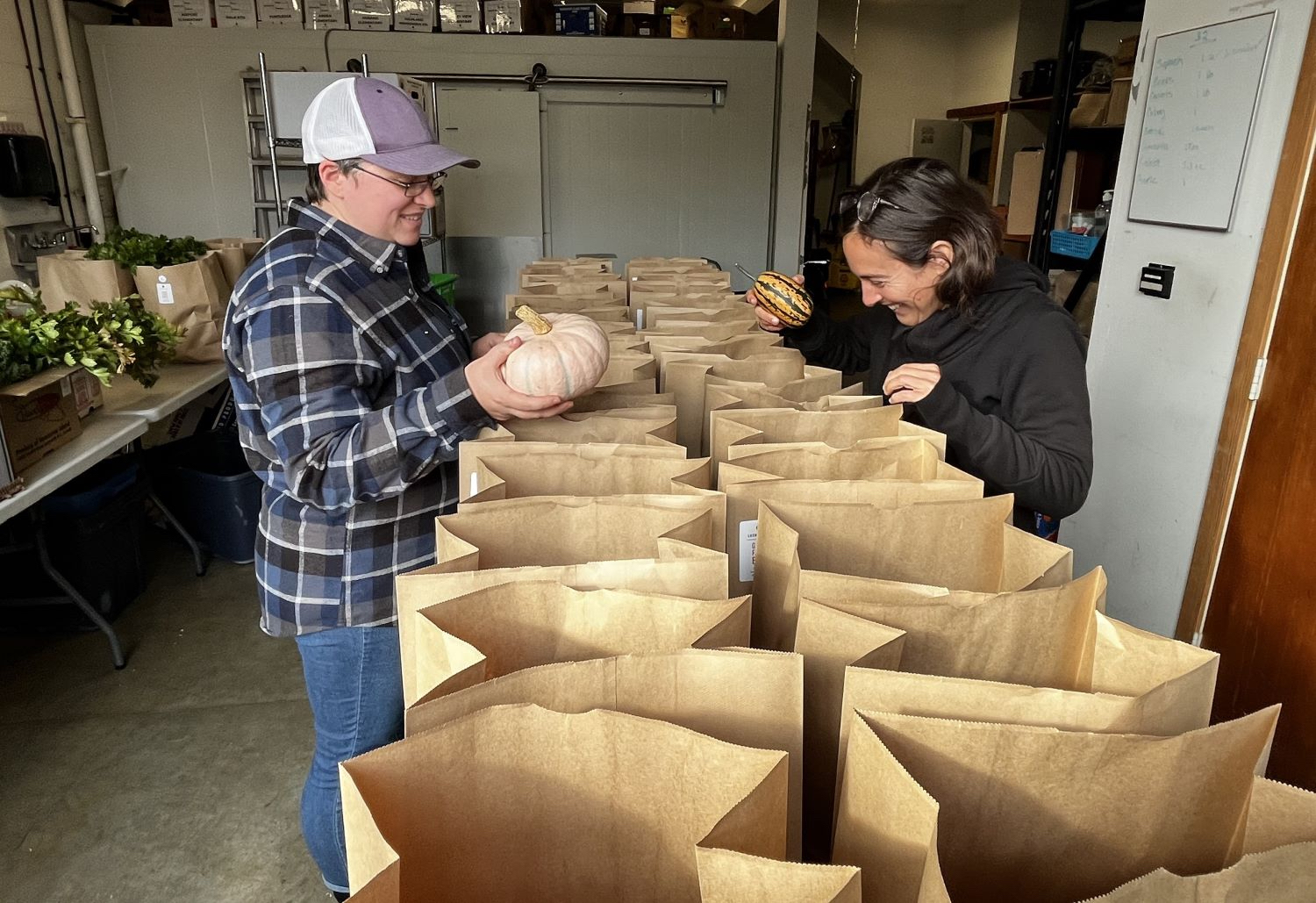
All of which raises an uncomfortable truth.
These farms do not stand on their own; everyone has an outside job that helps to subsidize their green thumbs.
Anderson-Brass holds a master’s degree in environmental assessment from Concordia University in Montreal and works on contract in winter for the Impact Assessment Agency of Canada.
Hamir’s husband, Neil Turner, is employed full time with Strategic Natural Resource Consultants, sits on the BC Farm Industry Review Board and is a volunteer firefighter. “This farm wouldn’t survive without our off-farm income,” he says. “It’s nice to have diversity, but sometimes the stress can get on top of you.”
Hamir is a part-time manager with the Investment Agriculture Foundation of BC, which funds farmers and food processors, and has served as an elected director on the Comox Valley Regional District board. She is founder and director of the Mid Island Farmers Institute, sits on the board of Comox Valley Arts and chairs Young Agrarians, a resource group for young and new farmers.
She sits on the advisory committee of the Comox Valley Immigrant Welcome Centre and is part of a group creating a Comox Valley Community Broadcasting Society.
And she’s running for the BC Green Party in the next election in the provincial riding of Courtenay-Comox.
“OK, it’s a lot,” she says.
Amara does have a full-time farm manager as well as up to six full-time employees in season. “We’re in our 50s now,” Hamir says. “Certain farm jobs I just can no longer do, like transplanting lettuce, being on our hands and knees.
“I can get down, then I can’t get up again.”
Hamir strongly encourages the co-op model for farming but acknowledges it isn’t for everyone.
“A co-op takes time and effort. You can’t just make decisions rashly. You have to go to the members and see if this is something everyone agrees on. It’s hard to pivot quickly when you’re not just your own individual farmer. I’ve also heard from growers that they hate meetings, and you absolutely have to have some way of communicating.”
The co-op takes a 23 per cent share of sales, which covers the cost of infrastructure such as a walk-in cooler and delivery truck, sales tents and other miscellaneous costs.
On the other hand, through sharing, individual farmers don’t have to buy these things. Members also share the work, be it manning a booth at a farmers market or delivering and handing out produce.
If one has a crop failure, another farmer steps up.
Hamir says she and her husband “came to farming between us with four degrees in agriculture plus we had equity from the sale of our home in Richmond. We had a lot of resources; we were able to kind of hit the ground running.”
“But farming is like raising a kid. You would never want to do it on your own if you had a choice. Having a co-op is one way of embedding a bit of family around you so that you can share the burden of farming.”
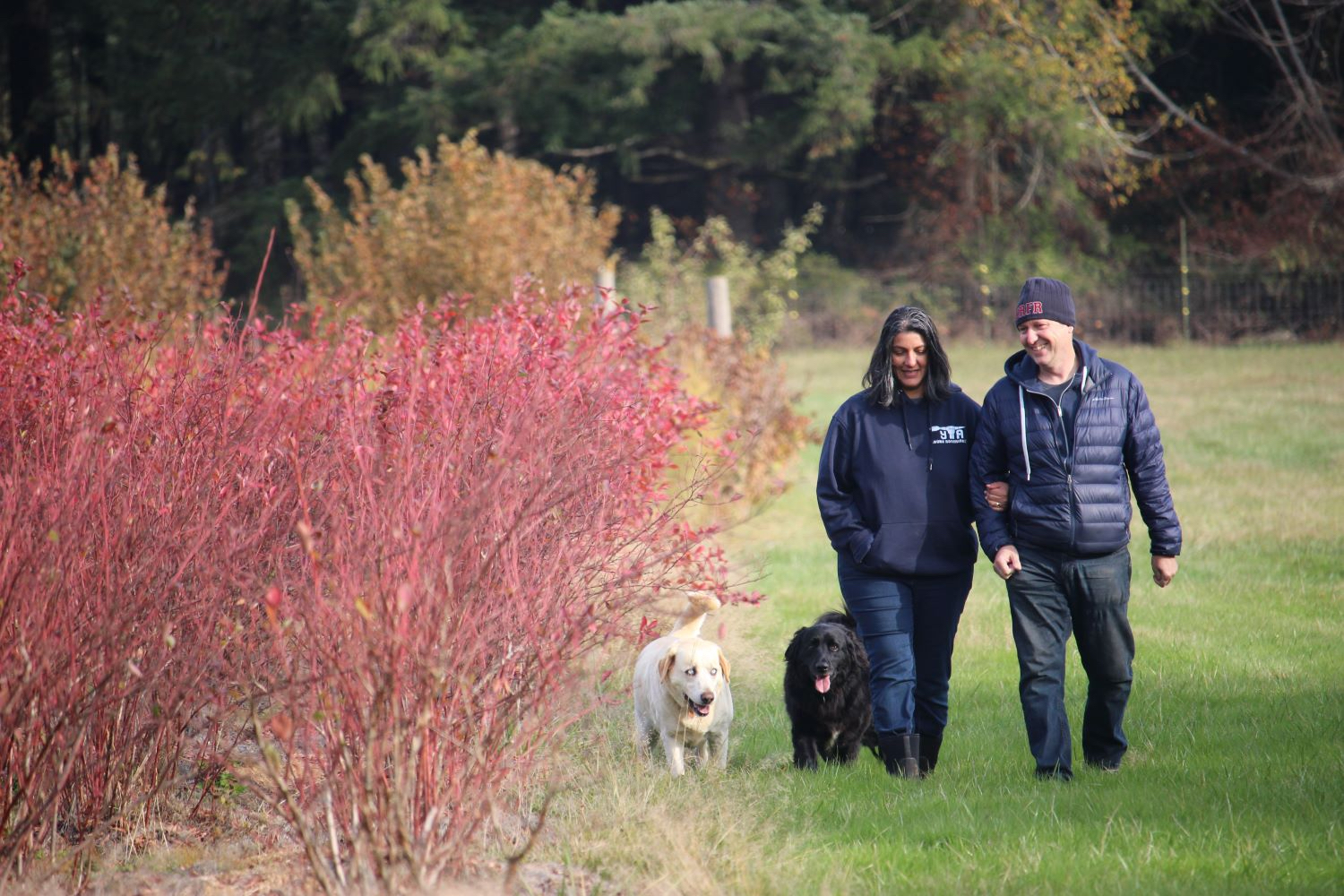
For Natasha Anderson-Brass, the co-op has been a lifeline, allowing her to concentrate on growing crops. “It was extremely helpful to have the co-op as my main sales channel,” she says. “It would have been really difficult and time-consuming for me to be marketing and finding customers.”
She reckons she broke even in her first year. “I covered most of my living expenses. But, no, I’m not paying myself.”
Still, she plans to stick with it and this year aims to add a small greenhouse.
“I’ve always had a dream of farming, from as long as I can remember. Growing food felt good. It seemed like a calling.
“First Nations people cared deeply for the land and managed the land in a sustainable way for thousands of years,” she says.
Anderson-Brass is a member of the Treaty 4 Key First Nation in southeastern Saskatchewan. After the plains bison were hunted out, Treaty 4 stipulated that First Nations be provided with the means to farm. Earlier this year, the federal government reached a $56.8-million settlement with the Kinistin Saulteaux Nation in Saskatchewan for failing to provide agricultural benefits owed in the treaty.
Anderson-Brass says her father was removed from his reserve at age three and moved to Nanaimo — part of the ’60s Scoop in which Indigenous children were taken from their families and adopted out.
For Hamir, leasing a small unused portion of their farm to Anderson-Brass at cost seemed the right thing to do.
“We really wanted to support Natasha,” Hamir says. “It was her dream to start her own farm.”
Find more What Works stories chronicling the business of a healthy bioregion, learn about this project, and if you’d like to republish, please get in touch. ![]()
Read more: Food




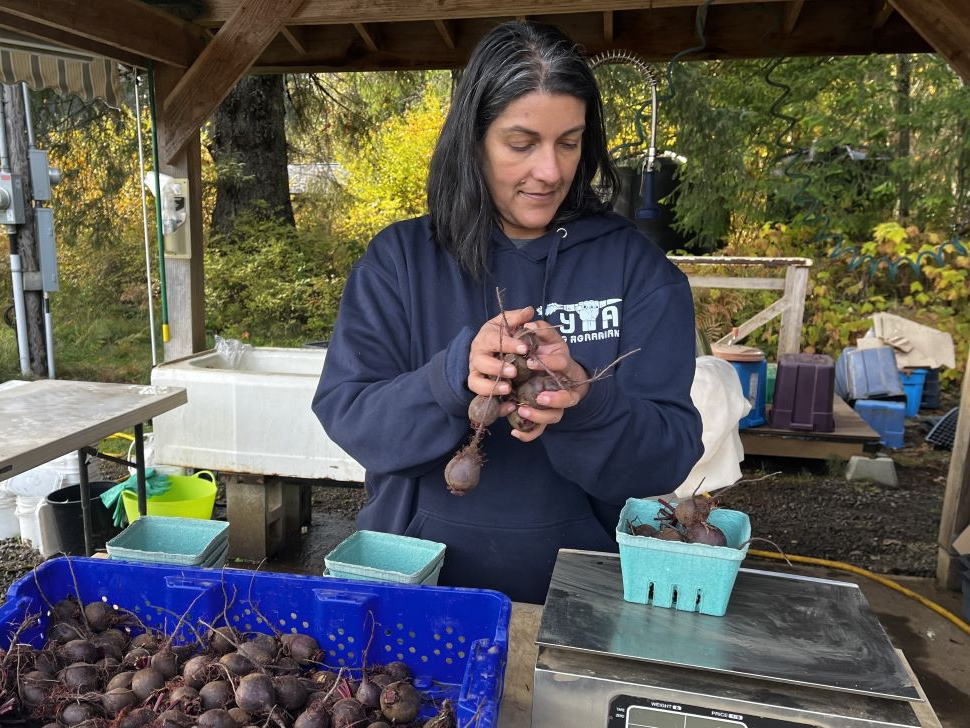







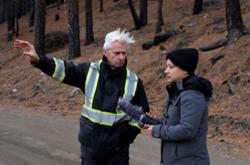




Tyee Commenting Guidelines
Comments that violate guidelines risk being deleted, and violations may result in a temporary or permanent user ban. Maintain the spirit of good conversation to stay in the discussion and be patient with moderators. Comments are reviewed regularly but not in real time.
Do:
Do not: